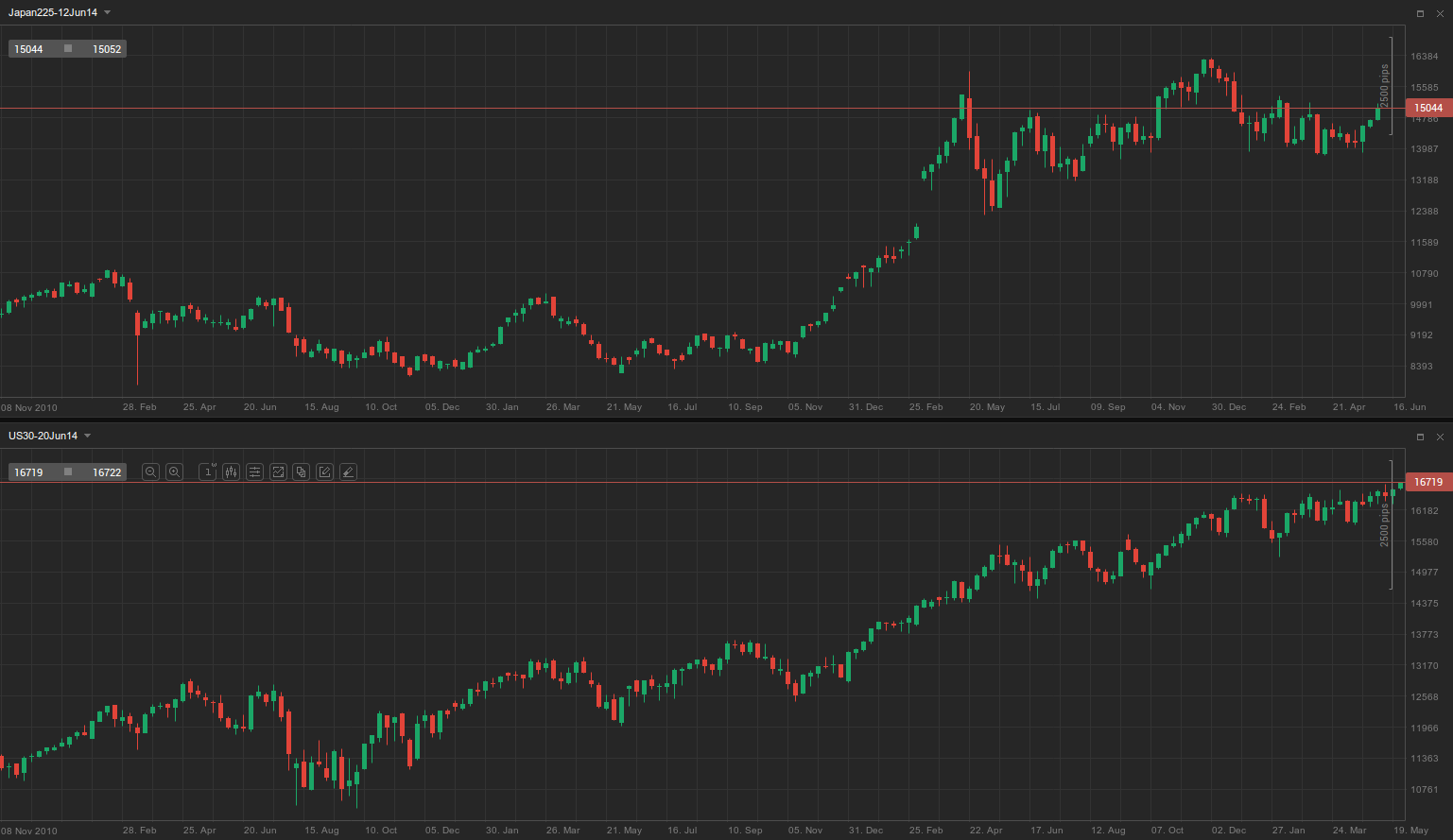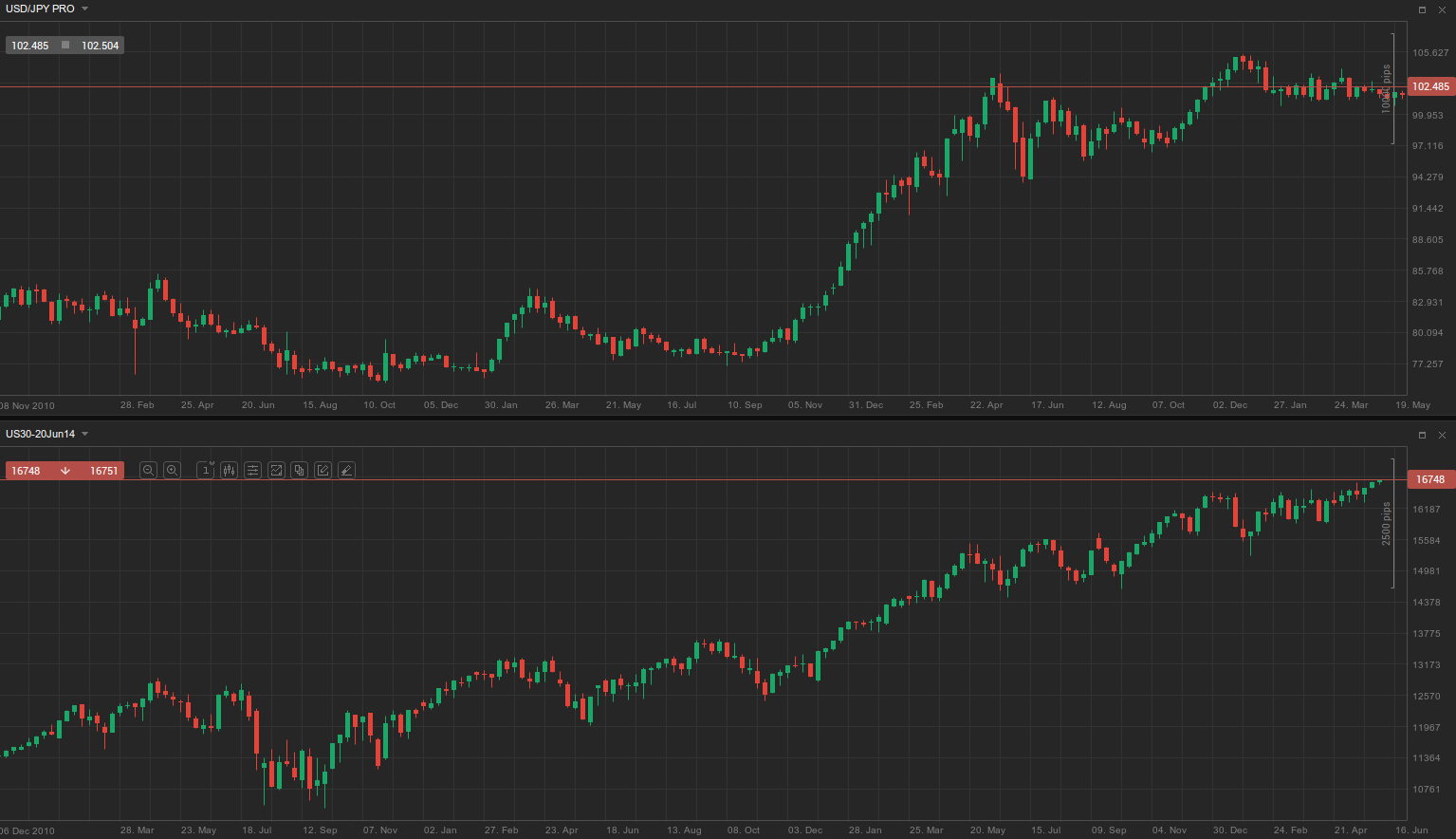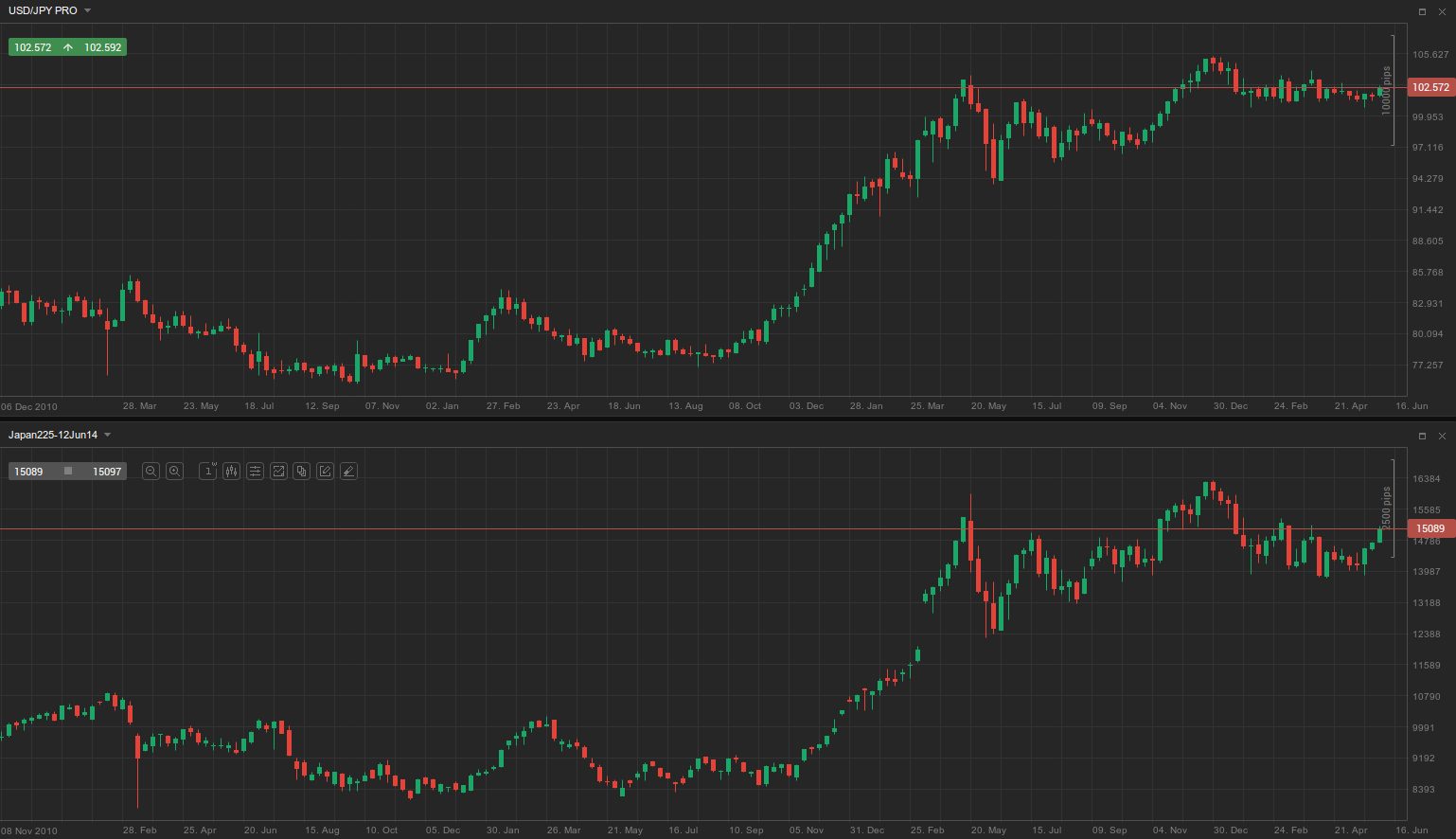Positioning according to equity market movements
This lesson will cover the following
- General thoughts on equity-currency correlations
- Correlation within the equity markets
- Correlation between currencies and equity markets
Earlier in our day trading guide, we’ve discussed the correlation between commodities and commodity-based currencies, the link between bond spreads and currency fluctuations, and how a trader can profit from having that knowledge. In this article, we will discuss the relationship between changes in equity prices and currency fluctuations.
There is a certain positive correlation between gains in equity markets and currency appreciation, stemming from investors’ risk appetite rising during times of economic prosperity. As robust economic growth boosts sentiment and investors no longer seek capital retention but rather higher returns, both equities and carry trades rise in popularity because they accomplish just that. Conversely, during times of economic uncertainty and global risk aversion, equities and carry trades are less favoured. However, the connection between movements in the equity and Forex markets is not straightforward and may sometimes deceive you. Moreover, it is not clear which market’s changes are fuelling moves in the other. Sometimes the Forex market leads the equity markets, while on other occasions equities trigger a move in currencies.
- Trade Forex
- Trade Crypto
- Trade Stocks
- Regulation: NFA
- Leverage: Day Margin
- Min Deposit: $100
Correlation within the equity markets
We will observe the correlation between the USD/JPY cross and the US and Japanese equity markets, represented by the Dow Jones Industrial Average and Nikkei indices. First, there is a correlation within the equity markets. You can observe it on the following screenshot, as represented by the Dow and Nikkei.

As you can see, although not all highs and lows within the last three-and-a-half years match, there is, overall, a very strong positive relationship between the two indices. You can also see that movements in the Japanese index are more volatile, whereas the Dow exhibits a more gradual advance; however, the overall bull trend is evident. Another detail worth consideration is that, on some occasions, the Nikkei leads the Dow, while at other times the Dow rises or falls before its counterpart.
Generally, due to the globalisation of the modern economy, stock market indices are highly correlated worldwide, not just in the US and Japan. As each developed and emerging economy relies heavily on trade, major economic powers tend to boost each other’s activity, as well as that of less developed nations, during times of economic prosperity. Conversely, when a major economy plunges into recession, such as the US, reduced activity cuts demand for imports of services, manufactured goods and commodities from other countries, which in turn negatively affects their production and overall economic performance.
Correlation between currencies and equity markets
Let’s take a look at the correlation between the USD/JPY and the Dow.

The situation is quite similar. Both the USD/JPY and the Dow Jones are trending upwards, with the index showing a more stable rate of ascent, while the currency pair is more volatile. In some cases, the cross leads a move in the index, while in others the Dow precedes a rise or fall in the USD/JPY.
Now, you might think that, because the US dollar has an overall positive relationship with the Dow, the yen and the Nikkei must also have a positive relationship. Well, this is not the case, and it shows why the connection between equity and currency price movements is more complex and not straightforward. On the screenshot below you can see a comparison between the USD/JPY cross and the Nikkei.

As you can see, the yen and the Nikkei have a very strong but negative correlation. Because the yen is considered one of the safe-haven currencies, demand for it is strong during times of political and economic instability. Up to the end of 2012, the Nikkei had remained in a trading range for the previous two years before rallying by 50% between the beginning of 2013 and mid-2014. At the same time, the highly appreciated yen was putting a damper on exports and thus hurting economic activity.
However, with the re-election of Shinzō Abe as Prime Minister of Japan in December 2012 and his nomination of Haruhiko Kuroda, an advocate of looser monetary policy, as the next Governor of the Bank of Japan, the yen was expected to depreciate. The BoJ embarked on accelerating inflation to 2% on an annual basis and announced in April 2013 that it would expand its asset purchase programme by $1.4 trillion over two years.
The yen began to depreciate shortly before the election of Mr Abe and lost around 30% of its value relative to the US dollar within the next year and a half. At the same time, you can see a mirrored movement in the Nikkei, as the weaker currency allowed Japanese companies to boost exports. Among them was Toyota Motor Corp, which managed to achieve a 90% surge in its net profit for the 2013/2014 financial year on the back of positive currency effects and record-high sales.
Thus, although currencies generally tend to have a positive relationship with equities, distinct exceptions like the one described above underscore the importance of not basing your trading decisions primarily or solely on these correlations. Just as with bond spreads, which we discussed in the previous lesson, a wide range of additional factors are at play here; therefore, a multi-factor analysis is required. It would be helpful to use the currency-equity market link as an additional component of your trading strategy, but not as its primary basis.
